#source: monty python's flying circus
Explore tagged Tumblr posts
Text
Sophie, confused about Elvin food after her first day in the lost cities:
Sophie: *pointing to a random, inedible tree* so how do you cook that?
Fitz: uhh... You don't?
Sophie: *now thoroughly confused* I'm supposed to eat it raw??
#source: monty python's flying circus#look i get it#elvin food is confusing#kotlc incorrect quotes#kotlc sophie#kotlc fitz#keeper of the lost cities
13 notes
·
View notes
Text
Mrs. Coyote: Mrs. Badger's exploded! Wile E.: Good thing, too. Mrs. Coyote: She's my best friend! Wile E.: Oh, don't be so sentimental, mother. Things explode everyday.
8 notes
·
View notes
Text
Richie: Eddie-baby, when you first started in the...
Eddie: I'm sorry, I'm sorry, but I don't like being called 'Eddie-baby'.
(Later)
Richie: I didn't really call you Eddie-baby, did I, sweetie?
Eddie: Don't call me sweetie!
Richie: Can I call you sugar plum?
Eddie: No!
Richie: Pussy cat?
Eddie: No.
Richie: Angel-drawers?
Eddie: No you may not! Now get on with it!
36 notes
·
View notes
Conversation
Kazuki: I always preferred the outdoor life...hunting...shooting...fishing...getting out there with a gun and slaughtering a few of God’s creatures.
Daigo: Sensei! NOO!!
Ryo: GYAOOOOHH!!
#source: monty python's flying circus#kazuki tsukumo#daigo kabuto#ryo akizuki#F-LAGS#imas sidem#sidem#idolm@ster sidem#the idolm@ster sidem#incorrect quotes
0 notes
Text
clips and episode titles below!
1. Brigadier and Bishop - S4E6: Party Political Broadcast
youtube
2. Court Charades - S2E2: The Spanish Inquisition
youtube
3. Kamikaze Scotsmen - S3E12: A Book at Bedtime
youtube
4. Molluscs - Live TV Documentary - S3E6: The War Against Pornography
youtube
5. Poofy Judges - S2E8: Archaeology Today
youtube
6. Silly Job Interview - S1E5: Man's Crisis of Identity in the Latter Half of the 20th-Century
youtube
7. Undressing in Public - S1E4: Owl Stretching Time
youtube
8. Whicker Island - S3E1: Whicker's World
youtube
#monty python#monty python's flying circus#round one#i know some sources censor the judges title but idgaf ♡
14 notes
·
View notes
Text
If you think I was a kid who loved to read, you’d be right, but that doesn’t just mean I was reading, like, Newbery Award nominated prestigious children’s novels. Because in my experience, most kids who love to read are more gourmand than gourmet. I was also reading:
* Class rosters. I begged my teachers for these. I wanted to try to memorize everyone’s middle names.
* Similarly, old yearbooks. I liked judging whether people’s names matched their faces and making up different names for them if they did. I also loved reading baby name books and making lists of names I liked.
.* The personals section of the newspaper. I liked picturing the people as they described themselves and imagining which combination of people on the page might like each other.
* The ingredients of food packages. Not even for any real informational reason, I just really liked certain fantasy-sounding words like thiamine and riboflavin.
* An old World Book Encyclopedia from the 1970s. I would sneak out of bed to read it because the bookshelf was near my bedroom door and I could crawl to it without making the floor creak. My favorite entries were the ones about Hawaii and tigers. I kinda developed a ritual of rereading the Hawaii article when I had read a scary book before bed and needed to calm my brain down.
* My dad’s Dave Barry and Woody Allen humor books and also transcripts of all of the Monty Python’s Flying Circus episodes. This is probably why my sense of humor has been so weird from such a young age.
* The part of the church hymnal with ceremonies for baptisms, weddings, and funerals. I liked to imagine them.
* Wine catalogs at friends’ houses. The descriptions of the wines seemed so poetic and abstract. I also liked when they said “fruit on the nose” because I pictured a dog balancing a whole piece of fruit on its nose.
* My parents’ parenting books. I liked to see if I was exhibiting developmentally appropriate behavior. I am not 100% sure if doing that is, in fact, developmentally appropriate behavior.
* Those little brochures advertising various roadside attractions and tourist activities at rest shops. I would grab as many as possible when we stopped to use the bathroom on a road trip. Also, travel guides in general.
* I checked out the entire “unexplained” section of the library over the course of third grade. (Dewey decimal 001.9.) Ask little me about Project Blue Book, I guess.
* I LOVED party planning books, especially ones with highly specific themed parties that seemed impractical to put on in real life like a whole chess-themed party culminating in a game of human chess, complete with lemon chess pie for dessert.
* Seed packets. I find the writing style of these very endearing. It always sounds so affectionate toward the plants.
* My grandma’s Reader’s Digest magazines, which felt like Russian roulette because they sometimes published disturbing articles that gave me nightmares. (Reader’s Indigestion?) I especially vividly remember a feature on adopted kids who need to wear Ilizarov apparatuses to straighten their limbs because they became malformed due to severe neglect at orphanages.
* For some reason, I loved reading restaurant menus and imagining what kind of food different fictional characters would order from there.
* And last but certainly not least, because I think this is a relatable one: the AMERICAN GIRL CATALOG! No, I never had an American Girl doll, but getting the catalog was a source of much excitement.
117 notes
·
View notes
Text
Terry Jones Vs. Alan Alda


Propaganda
Terry Jones - (Monty Python's Flying Circus, Do Not Adjust Your Set) - I wish I could tell you all in a few sentences just how handsome, funny, intelligent, kind and soft-spoken Terry Jones was. How passionate he was about the things he loved, lacing his interests (like e.g. history) throughout all the projects he was working on. How he was supposedly always laughing and giggling when writing and reading out sketches. How he admired the art of silent movies/Buster Keaton and was obsessed with writing poems as a child. How he was described as a wonderful friend and a little as if he carried his own world around with him. But there is simply too much to tell and I adore him too much to pick the best facts, so this will have to do
Alan Alda - (M*A*S*H) - He is both the saddest wettest little meow meow and your kindly grandfather and your favourite eccentric uncle (mom's side). Somehow it works. Passionate Democrat, feminist, great writer, he and his books are hilarious. Did a cartwheel when he won an Emmy! How he met his wife is the best meet cute of the last two centuries, and they've now been married over 60 years!!!
Master Poll List | How to submit propaganda | What is vintage? (FAQ)
Additional propaganda below the cut
Alan Alda:
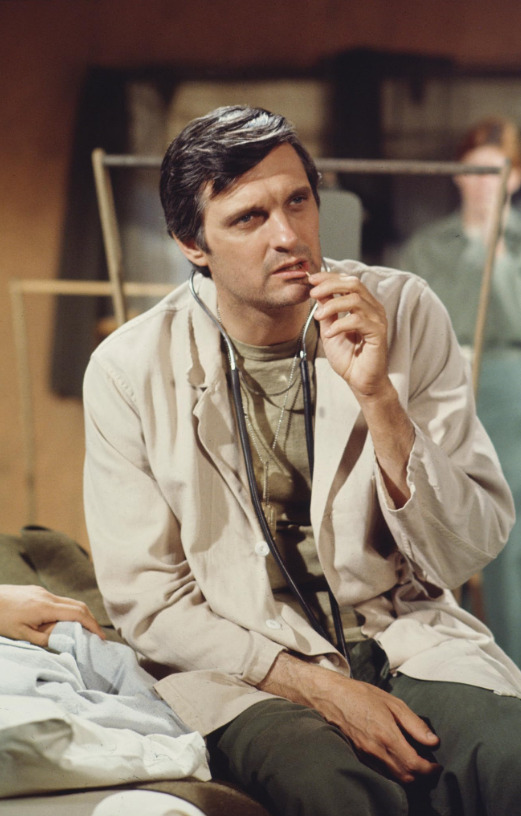
he’s just so good in MASH
youtube
he put so much bisexuality into hawkeye i think it fundamentally changed me when i was little and watching mash for the first time. anyway do we all know the story about how he met his wife when they were at a party together and they were the only two people eating the cake that fell on the floor and he fell in love with her over her laugh. i just think hes neat :) i love when theres a strange looking man. also feel it necessary to say that the guy that wrote the book mash was based on wrote himself as hawkeye and HATED alda's hawkeye bc he displayed his morals too much (alda had it in his contract for the show that every episode had to have an operating room scene bc otherwise you arent backdropping the fact that war is Not fun. actually. he almost didnt take the role bc he thought a war comedy would make too much light of the horrors)
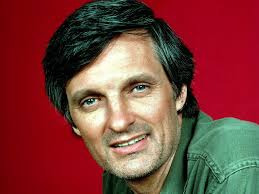
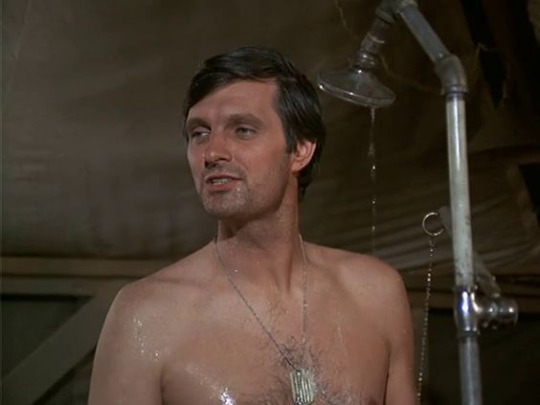
please please please use this picture of him, he's so hot in it
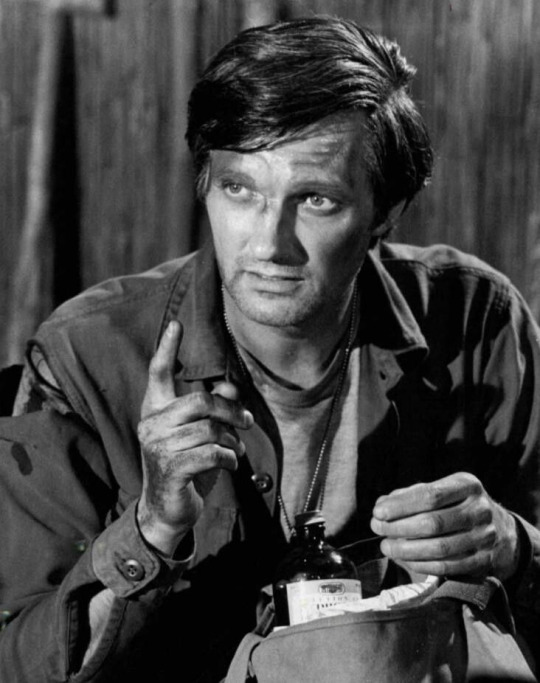
His comedic delivery in MASH...
youtube
The story of how he met his wife is charming and sweet, and they've now been married 65 years
Just look at him. He's the most beautiful man I've ever seen but also he's completely average. He's got a weak jawlines and a round face and these big soft eyes and he's just so beautiful. He's capable of playing a silly charismatic sitcom protagonist in one scene, and a jaded army surgeon haunted by the deaths he's witnessed in the next. He's so hot that my dad once told me he decided to apply to medical school because of how much he was attracted to Hawkeye Pierce. That's literally how I learned that my father was bisexual.
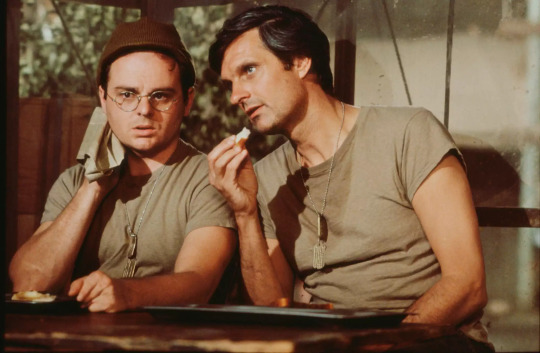
He's also just a really great dude? He's been outspoken about his political beliefs for a long time, and has always been strongly and vocally anti-war, pro-feminist, and pro lgbt. He served a tour in the Korean war, and his experiences there informed his performance in the show. He (and honestly the entire cast, but especially him) really just soared above and beyond the standard for comedies of the day.
youtube
He's so funny and his eyes are pretty

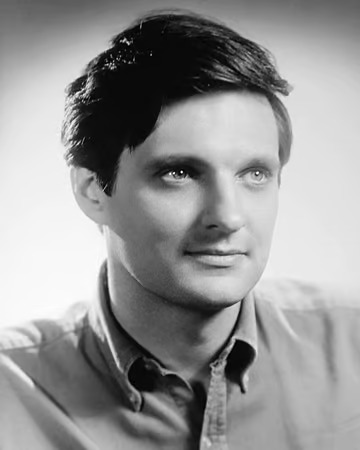
He loves and is a champion of science (Source).
83 notes
·
View notes
Note
Since it’s nearly the end of Valentine’s Day today……
Who’s your Top 10 (or 5 at least) Fave romantic couples/ships/etc from your fave fiction (can be tv shows, movies, books, etc) and why?
(it can be Monty Python, the Six Idiots, H2G2, etc!)
uhh thank you <33 💖💖💖
WOW GOOD QUESTION (there's no particular order)
1) the Doctor/Rose Tyler Doctor who
Is that original ? No. Am I in love with both of them ? Yes. (Works with 9 and 10)

2) the Doctor/Jamie Doctor Who
I don't know why. IT'S JUST THAT...THEY'RE SO STUPID. IT MAKES MY HEART MELT.

3) Aziraphale/Crowley Good omens
It costs me A LOT to put it here and you all know why. But huuuh Terry Pratchett+David Tennant+Michael Sheen+a VERY enthusiastic community

4) the two half tigers from the Meaning of life. (A silly one)
Ok stop everything we've ever done with rings and necklaces to prove love and stuff. I WANT HALF A TIGER MADE OF BREAKFAST CEREALS PACKETS.

5) Elder Vex/Elder Ho-Tan Yonderland
I don't need to explain this choice. They're PERFECT. People just know it.

6) Wonder woman/Zala Jor-El DC Comics
Yes, watching pics of Wonder woman did alter the chemestry of my brain.
And YES THAT IS A PRINCESS GOAL.

7) Gimli/Legolas Lord of the rings
Ok I'm usually rather a Tolkien purist. It's not canon or justified by the source material. (even if their strong friendship is) HOWEVER, DOODLES OF THEM MAKING EACH OTHER MATCHING BRAIDS ARE PRICELESS.
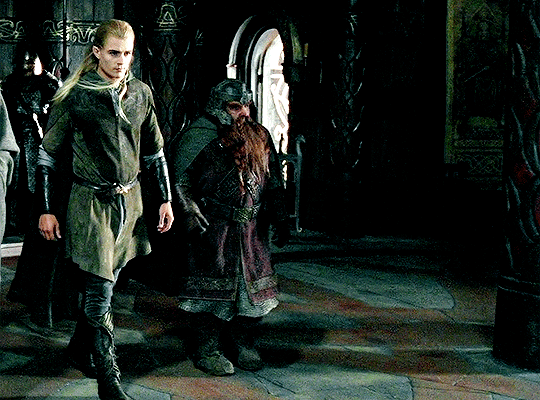
8) Zaphod Beeblebrox/Arthur H2G2
Zaphod and anyone in fact. (I draw the line at one head being in love with the other)

9) Raymond Luxury Yatch/the surgeon Monty Python's flying circus
I never seen anyone holding a branch IN SUCH A ROMANTIC WAY.

10) Bean/Mora Disenchantment
Some people found Mora irritating but honestly I just LOVE their story. I mean A SQUIRREL AND A MERMAID !!!

Thanks for asking @yonderghostshistories ❤❤❤ What about you ?
10 notes
·
View notes
Text

'Front Schweine'
[PC] [GERMANY] [MAGAZINE] [2000]
"Hogs of War was created by the founder of Gremlin Interactive, Ian Stewart. He was inspired by the film Babe and by the 1995 video games Command & Conquer and Worms. According to game developer Andrew Fox, the premise of the game was "Worms, except in 3D and with pigs". Development on the game began in 1997 and took 3 years to complete. This long development time was due to Gremlin Interactive being purchased by Infogrames in 1999. Two teams developed the game with a focus on different system versions. One produced the PlayStation (PS1) version and was led by Jacob Habgood, and the other for Windows was led by Fox. All sound and art assets were shared between both platforms while different 3D engines had to be made. The game drew inspiration from the black comedy series Blackadder Goes Forth that was also set in the First World War. The American military march, "The Liberty Bell", composed by John Philip Sousa, was added by Habgood as the game's theme tune. Habgood chose this music as it was in the public domain and fit the mood of the game due to its age and use in the comedy show Monty Python's Flying Circus. The high draw distance and number of polygons that could be used, especially on PlayStation, meant that in order to allow the players to have range, the number of players and other assets had to be cut. The initial build of the game was described by Habgood as being "slow and hideous". It contained no gameplay elements and the pig characters were tall and humanlike. It was suggested to cancel the game, but the development team asked for more time. The next build was dubbed "Cubes of War" by the developers as it focused more on gameplay rather than graphics leading to simple cubes replacing the pigs. This was to demonstrate that the gameplay was fun before another build added in graphical improvements for the pigs. Gremlin Interactive was taken over by the French company Infogrames in 1999, which was a benefit to the game as it provided more time for development. Following the takeover, Infogrames supported the game and continued its development. The company decided they wanted to hire French comedians from the show Les Guignols to voice act in the French version of the game while for the English release Rik Mayall and Marc Silk were hired. Each language version of the game was localised in terms of the comedy, voice work and puns. Hogs of War was released for the PlayStation in the United Kingdom on 16 June 2000 and in France on 25 August 2000, with a North American release following on 29 September. The game was released for Microsoft Windows in Europe on 3 November the same year. In October 2003, the now-named Atari sold the assets of Gremlin Interactive, including Hogs of War, to Ian Stewart's Zoo Digital Publishing. The company shortly afterwards reissued Hogs of War under the "Zoo Classics" budget label. ~Wikipedia
Source: PC Action, November 2000 || Internet Archive; MattArchiver
#gaming#advertising#front schweine#hogs of war#turn-based#tactics#strategy#anthropomorphic#infogrames#pc#computer games#germany#2000
6 notes
·
View notes
Text


PCC 42/52, 2023 "Ode to Terry Gilliam"
I have been watching monty python's flying circus and the artwork of Terry Gilliam inspired this collage.
[Left original image: Thomas Neil Cream - McGill Library]
In 2023, I took part in a fun project I've been following for a while. The Paris collage collective is a project where people can weekly make a collage with the same picture/ artwork. The pictures are carefully selected and licence free. The pictures are digital available, or you can buy the book with all 52 images in advance. In 2023, I finally decided to buy the book and weekly participate, and it has been such fun. It's amazing to see people all over the world working with the same image.
#Midzomer art#analogue collage#paris collage collective#PCC#surreal collage#inspired by Terry Gilliam#butterfly#fish#tophat#vintage#monty pythons flying circus#gnome#hands#terry gilliam#frog
2 notes
·
View notes
Text

Kate Hepburn
Designer and artist who worked for Spare Rib, the Monty Python team and Pink Floyd
In a career that spanned half a century, the graphic designer Kate Hepburn, who has died aged 77 of multiple system atrophy, displayed great versatility. While an artist aims to develop a distinctive and recognisable style, a designer must be able to alter their approach and technique according to the situation. Hepburn was adept at this, working in fields including leftwing causes, music, comedy and publishing.
In 1970, during Kate’s first year of study at Royal College of Art, London, her sister Alison married Terry Jones of the Monty Python team. This led to Kate working with Terry Gilliam on the animations that punctuated the television comedy series Monty Python’s Flying Circus; in particular he recalled her skill in drawing medieval figures. For The Brand New Monty Python Bok (1973), with its misspelled title, she designed a dust jacket smeared with fingerprints. Those who believed the jacket to be genuinely dirty could discard it – revealing the explicit mock-cover of Tits ’n Bums, “a Weekly Look at Church Architecture”.
The Python books co-designed by Hepburn show her brilliance at recreating anything, from the photo-love stories of girls’ comics, complete with deliberately abysmal picture quality, to classifieds to children’s books to Victorian play manuscripts. She would switch typesetting methods – Linotype for one pastiche, rub-down lettering for another – to achieve the authentic flavour.
In 1972, Hepburn joined the staff of the new feminist magazine Spare Rib. Its format and grid were worked out by Sally Doust, a co-designer. Hepburn’s first contribution was its logo, which the magazine’s co-founder Marsha Rowe said was made “with a mix of typeface and free hand. She designed ‘Spare’ in smaller type, jutting up against the ‘Rib’, the ‘ib’ sloping forward, with a jagged force, resonant of bone.” This reassured Rowe that her choice of title, initially a joke, was the right one. Rowe wanted to attract “women readers who were still nervous of Women’s Liberation”, and Hepburn understood that some camouflage was needed, believing that “the magazine’s design and choice of photos should look like other women’s magazines, only with different content”.
Hepburn left the magazine in January 1973, later telling Rowe that she had “begun to feel the strain of the contradiction in working for Monty Python, which still had an element of sexism, and for Spare Rib”.
In 1974, Hepburn began her occasional work for Pink Floyd. Before a tour of Japan, the drummer Nick Mason asked Hepburn to adapt Hokusai’s The Great Wave off Kanagawa for his drumkit. “I had the idea, but she picked it up and took it into a 3D world.” Of her oeuvre in general, Hepburn told me that there was a lot of pastiche. But pastiche is a craft in itself, and artworks such as Mason’s drumkit, which Hepburn painted by hand, went beyond pastiche – here, by reinventing a two-dimensional graphic as a sequence of three-dimensional cylinders sitting adjacent in space.
From 1975, Hepburn contributed cover and book designs to the leftwing publisher Pluto Press, often working through the night to meet deadlines. Her designs for editions of Pluto’s themed Big Red Diary show her skill in collaging images from disparate sources to create a dynamic, coherent whole.
In the 1980s, Hepburn’s work branched out into stage design, in collaboration with her then partner Mark Fisher. Her work for Jean-Michel Jarre’s 1981 tour of China featured banners printed using rudimentary Chinese printing, airbrushed posters on canvas and the cover of the consequent live album. This work earned her two D&AD awards.
Born in Blackheath, London, Kate was the daughter of Margaret (nee Hope) and James Telfer. After her parents separated, she lived with her mother in Hampstead. Margaret later married James Hepburn, whose RAF job required the family to move frequently. In 1960 they finally settled in Parliament Hill, London, where Kate attended Camden school for girls. There she adopted Hepburn’s name, thinking it a better one for an artist.
After a year at Bath Academy of Art, she enrolled in 1966 as a graphic design student at the Central School of Arts and Crafts (now part of the University of Arts London), where she received rigorous training in drawing layouts and type by hand: “You had to hand-rule the text with your Rapidograph pen, and trace 7-point type. It was a very lengthy process, devoted at times.” Making thumbnails and sketches had remained important throughout her career, as “a way of letting the client know that you hadn’t taken expensive decisions using actual materials. You were still drawing, still discussing with them.”
At Central, Hepburn began a relationship with fellow student Pearce Marchbank, whose pioneering work for underground magazines applied radical graphic techniques to politically radical content. Early in their careers both Hepburn and Marchbank had to find ways to achieve maximum visual impact with rudimentary means, for clients who had little money. After the couple separated, Marchbank’s technical knowhow remained a valuable resource. In 1987 they collaborated with Roger Waters on his album Radio K.A.O.S., a cover that converts Waters’ name and track titles to morse code. This needed only two inks and no images, contrasting with the extravagantly staged imagery used by other stadium acts at the time.
In later years Hepburn continued with her watercolour paintings, and screenprints of abstract designs conceived during her student days. Despite periods in which she worked in-house – notably at Wolff Olins brand consultancy – her calling was that of a freelance designer and artist whose vocabulary allows them to switch style to fit the circumstances.
She is survived by her daughter, Usha, her grandchildren, Maya and Manu, and her sisters, Alison and Harriet.
🔔 Kate Hepburn, graphic designer and artist, born 11 June 1947; died 26 July 2024
Daily inspiration. Discover more photos at Just for Books…?
4 notes
·
View notes
Text
A Book-Buyer's Manifesto
Allow me to preface this with two qualifiers:
I spend far too much time researching and purchasing books, so the things that rub against my soul like a large, invisible and slightly rusty cheese grater may not trouble most book lovers; this is in the nature of a personal rant and may not generalize.
I understand that the complaints I am making are not, by and large, the fault of authors. Furthermore, I understand that capitalism sinks its thick, warped, blood-hungry roots into everything, and I am sure that editors, reviewers, designers, etc. are simply reacting to the panopticon market.
On to the complaints!
“I wish to register a complaint.” - Monty Python’s Flying Circus
***
Stop 👏 Using 👏 AI
I do not care what publishers are being told by investors or marketing teams or anyone else with an inherent fondness for a well-placed decimal point. I do not want my books read to me by machines. Even if publishers can ethically source and reproduce the voice of my beloved Andrew Robinson, (and pay him handsomely for the trouble) who is capable of sending many a merry sparkle down my spinal column, I do not want books read to me by machines. I do not want the rich tradition of oral storytelling (of which audio books are the heirs) stripped of the cadence, the laughter, and the magic of human intonation. If AI is growing bored, it can do some laundry.
In this same vein: I do not want cover art created by AI. I do not want AI-generated summaries. Fuck off.
Speaking of Summaries:
🧑🎓 If college freshman can do it, Simon and Schuster, baby, so can you.👩🎓
I have spent many semesters teaching writers how to summarize the words and the works of other writers with whom they find themselves in conversation. One of the surest indicators of a researcher’s grasp of their topic is if that writer can explain the material to another student. To do so, summary is usually required.
I have no connections with or insight into the world of publishing, but, apparently, everyone in the last decade decided to call in sick on “how to sum up this book” day.
The back of a book should include a brief description of what in the Sam hell that book is about. In four to eight sentences, tell the reader who the main character is/characters are, when/where the story is occurring, how it all takes place, and why they should care.
A book summary should not:
excerpt the book in italics. If I want an excerpt, I will undertake the radical and transformative step of opening the book.
compile praise from famous names. I don’t care that Stephen King liked this book (or was paid or pressured to say as much). I am not Steve. If I want to read book reviews, various publications and websites have me covered. I don’t care how great the book is if I don’t know what it is about.
write an equation in the form of: “if you liked X and Y, you’re going to love the book in your hands!” I do not currently wish to consider X and Y IPs. I am considering this book which is neither X nor Y. If it cannot stand on its own merits without the mention of Star Wars, Jurassic Park, South Park or whatever television series is hot right now, why should I bother with it?
On that note:
🍿 Leave Derivation to the Movies 🍿
I understand that one of the ways to “win” at capitalism is to observe a successful product and then produce one’s own version of it. However, I would like to propose a decade-long moratorium on all titles that are intended to conjure A Song of Ice and Fire. To all authors currently at work on A Vest of Mites and Mouse Droppings, I wish you joy of finding a new title. Likewise, the next person who strips a woman’s identity by using a title like The Radish Pickler’s Wife gets slapped. Magical schools of any kind are right out, as are any version of The Hunger Games.
Likewise, readers may no longer be lured in by the marriage of beloved IPs. That is, no more “The Terror meets The Wizard of Oz.” Don’t get me wrong - arctic, brooding Tin Man sounds a delight, but if the story containing him cannot be described independently of the source material, keep working on that synopsis.
🎉 Representation for All 🎉
Publishers are also to be discouraged from using identities (transgender, disabled, cultural, etc.) as marketing tools when the book in question makes no serious effort at actual representation but, rather, seeks to check off any “buzzy” term in order to sell more copies. I am delighted that readers are now seeing more representation in literature; everyone deserves to see themselves reflected in art. However, publishers should not introduce characters as Suzie Queue, a person of color who struggled with chronic illness and poverty unless these traits are (a) part of the story in question and (b) actually explored and engaged with during the course of the narrative. If Suzie can be stripped of all the markers listed above without altering the story, revision is needed. If Suzie has been constructed solely as a sales pitch, said book should be edited or reconsidered.
Publishers should also stop trying to seize on certain categories to the exclusion of everything else. I adore sapphic content - but not in cases where I feel that it was generically stamped onto a story because another title sold well. Please release a variety of books with a variety of characters and representations - but do it with some modicum of honesty. (Yes, capitalism, I know).
1️⃣2️⃣3️⃣ Not Everything Needs to be a Series 4️⃣5️⃣6️⃣
‘Nuff said.
💙💙 The Book with the Blue Cover 💙💙
Stop making every book cover in a given genre look identical. The technology (and the underpaid artists) exists to make even the spines and the page edges beautiful; don’t let medieval monks outdo you, publishers. Make covers unique, distinguishable from one another, and breathtaking.
No more cutesy animated people on book covers. Romance novels are especially bad for this. The options seem to be (a) male gaze, (b) female gaze, (c) this cover art appears to have been designed for a third grader. All of these make me feel icky.
Artists, I am not trying to harm you, here, but, sometimes, art must bow before practicality. With that in mind: titles should be clear. Do not include a hyphen if there isn’t one. Do not “artfully arrange” the subtitle so that it is unclear which is the primary. Boring is fine if that is what is required to achieve legible. Do not break a word across lines or make letters “wavy.” I realize this seems silly (can’t I just look up any confusing titles?) but internet algorithms are currently hell on wheels (looking at you, Amazon, and your popularity nonsense), so I would rather not.
Why (YA), why!?
Blink 182 famously informed listeners that “nobody likes you when you’re twenty-three,” but, as a reader, seventeen is the age that has me grating my teeth. As a lifelong reader who did not have a rich, varied YA market (the options were Christopher Pike, kids with cancer, or Amish life at my local library and I cannot explain why), I am thrilled to see YA thrive and provide representation to all sorts of readers. However, life does not end at twenty-five. There should be more fun novels for readers of every age. Release the coming-of-age book, by all means, but, publishers, here is a money grab for you: release it again, with slight modifications, as a book with grown-up characters.
Readers, what else did I miss?
3 notes
·
View notes
Text
Daffy: Wasn't he great, my boy? Gossamer: He was great, Mr. Duck! Daffy: The way he kept fighting after his head came off! Gossamer: He was better when the head came off, Mr. Duck. He was really dodging the guy. Daffy: Yeah, I reckon that if he could've lathsted till the end of that firthst minute, he would've had The Crusher worried. Gossamer: Sure, Mr. Duck. Daffy: Oh he was great. Did you sthee his left arm? Gossamer: No. Daffy: OK, we'll look around the hall after everybody's gone.
0 notes
Text


















Lumberjack Day
Dress up as a lumberjack, eat a hearty meal, and honor the venerable, crucial, and often dangerous profession of lumberjacking with a thanks to lumberjacks.
“Oh, I’m a lumberjack and I’m okay….” Monty Python famously sang this ridiculously silly Lumberjack Song, and singing a rendition of this would certainly be appropriate as part of the celebration of Lumberjack Day!
History of Lumberjack Day
Lumberjacks have been an interesting part of human history for many years, felling trees for use in building houses and structures as well as for making paper and other helpful uses. And while this profession was certainly around long before, the specific term “lumberjack” actually comes from Canada where it can be traced back to a letter written in the year 1831. Other terms, such as “wood cutter” or the more modern “logger” are also appropriate for the people who do this type of work.
The history of Lumberjack Day can be traced back to the mid-2000s when Marianne Ways and Colleen AF Venable decided it was time to honor this esteemed profession. Venable herself worked as a lumberjack at one point, although she has admitted that the original idea for the day was conceived as an excuse to go out and eat pancakes and waffles with friends!
Lumberjack Day has caught on in more recent years and is now celebrated by many folks, especially in Canada and the United States.
How to Celebrate Lumberjack Day
Have a load of fun and celebrate the ruggedness of this profession on Lumberjack Day! Check out some of these ideas for making plans and observing the day:
Dress Like a Lumberjack
One delightful and simple way to get on board with celebrating National Lumberjack Day might be to take a page out of their fashion book. Dress for the outdoors and chopping down trees by donning some jeans or work pants and a pair of sturdy boots, then top them off with a perfect plaid flannel shirt. Even more fun, add a fake beard and a beanie cap for the perfect look. In certain workplaces, carrying a real axe might be going a bit too far, but a fake one from a costume shop might be kind of fun!
Go Out for Pancakes and Waffles
Since the motivation of the original founder of Lumberjack Day was to go out with friends to eat mountainous piles of pancakes and waffles, it seems like the right way to celebrate this day even now. Head on over to a favorite breakfast-all-day restaurant and enjoy a stack or two with yummy Canadian maple syrup!
Host a Lumberjack Day Party
Anyone who wants to join in on the fun of Lumberjack Day can organize a party for friends and family where the idea is for everyone to dress up in the cliché lumberjack style of plaid shirts, boots, suspenders, and beards. Provide snacks and treats with a wood cutter theme, such as pretzels (that resemble cut wood), fresh broccoli stems (that look like little trees), and cheese puffs (or campfire flames). Don’t forget to dress the table in a red plaid flannel tablecloth!
For entertainment, the group can certainly watch some Monty Python episodes, particularly the ninth episode of the BBC show, Monty Python’s Flying Circus, which features The Lumberjack Song. Other ideas for how to enjoy a party for the day might be to do a little online research and learn about lumberjack jargon, jokes, drinks, and recipes.
Attend Some Lumberjack Day Festivities
Several different communities in the United States have events and even full weekends that celebrate the fun and festivities of the lumberjack. Lumberjack Day is the ideal time to make plans to visit one, or several, of these community events. From Orofino, Idaho to Stillwater, Minnesota, and all the way over to West Point, California, the celebration of lumberjacks is worth pursuing whether near or far.
Parades, contests, entertainment, live music, flower shows and so much more can be found in communities celebrating Lumberjack Days. And the best celebrations will, of course, include access to an all-you-can-eat pancake breakfast!
Source
#Lumberjack Day#Paul Bunyan#Babe The Blue Ox#Klamath#California#roadside atrraction#Arizona#Flagstaff#Redding#26 September#National Lumberjack Day#LumberjackDay#Breakfast Waffle Burger#Chicken and Waffle#Pecan Crusted Chicken and Waffle#Blueberry Pancakes#Canada#travel#original photography#vacation#Terrace#British Columbia#USA#tourist attraction
3 notes
·
View notes
Text
"Python Unleashed: The Past, Present, and Future of the World's Favorite Language"
As of 2020, Python has secured its place as one of the most favored and widely used programming languages globally. The demand for Python developers has witnessed a significant surge over the past several years, owing to its continuous enhancement with the integration of various libraries catering to specific application domains.
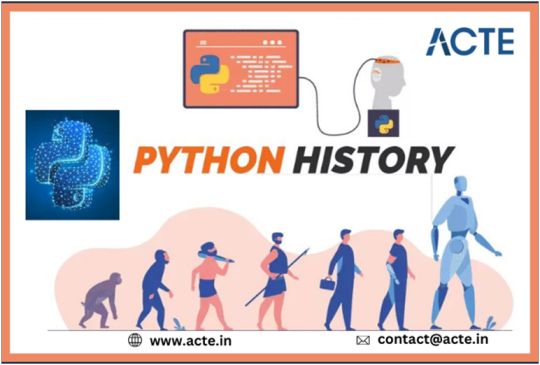
Python, being an open-source and robust programming language, has garnered increasing popularity. Its versatility is evident as it seamlessly operates across multiple platforms, including macOS, Windows, and Linux. According to the PYPL Popularity of Programming Language Index, which analyzes Google's most searched programming language tutorials, Python has experienced the most substantial growth over the last five years, currently holding a market share of 31.47%, with Java following at 19.14%.
For the development of user-friendly and adaptable web-based applications, Python offers several frameworks. Additionally, this language is highly favored among data scientists and professionals working with technologies such as Machine Learning, AI, Data Mining, and Big Data. Notably, major platforms like Netflix, Dropbox, YouTube, Instagram, Quora, Spotify, and Reddit rely on Python to effectively manage the substantial influx of daily traffic and user requests.
Overview of Python's Version History:

Python's inception dates back to the late 1980s, and it was aptly named after the BBC TV show "Monty Python's Flying Circus."
Guido van Rossum initiated the implementation of Python at CWI in the Netherlands in December 1989.
Python served as a successor to the ABC programming language, featuring capabilities such as exception handling and interfacing with the Amoeba operating system.
On October 16, 2000, Python 2.0 was released, introducing numerous new features.
Subsequently, Python 3.0 was launched on December 3, 2008.
Python's Early Development (1991-1994)
Python made its debut in 1991 when its code was initially shared on USENET.
The release of Python 1.0 in 1994 marked a significant milestone, introducing essential functional programming tools such as lambda, filter, map, and reduce.
Version 1.4 further enriched the language with the inclusion of features like keyword arguments and built-in support for complex numbers.
Progress and Community Emphasis (2000-2002)
The launch of Python 2.0 in 2000, driven by the BeOpen Python Lab Teams, aimed to foster an open and community-oriented development approach, addressing concerns about the language's reliance on its creator, Guido Van Rossum.
Python 2.0 brought substantial enhancements, including list comprehensions and a robust garbage collection system.
Python 2.2 continued to strengthen Python's object-oriented nature by unifying its types and classes into a coherent hierarchy. This phase also introduced the concept of generators.
Python 3.0 and the Path of Evolution (2008)
Python 3.0, also known as Python 3000 or Py3K, was introduced in 2008 to rectify design flaws and streamline the language's functionality.
Guided by the principle of eliminating outdated practices to prevent future duplication, Python 3.0 underwent a complete overhaul, triggering debates within the Python community.
Despite the controversy, Python 3 emerged as the future of the language. An announcement in November 2014 confirmed the support of Python 2.7 until 2020, with no subsequent release of Python 2.8.
Python's Ongoing Relevance and Adoption (Present and Future)
Python's extensive adoption by prominent organizations such as Google, NASA, and Nokia is a testament to its user-friendly syntax and support for various programming paradigms, including object-oriented and functional programming.
The language's compatibility with multiple Integrated Development Environments (IDEs) further amplifies its appeal among developers. Looking ahead, Python's creator, Van Rossum, remains optimistic about the language's continued growth and relevance.
The Superb Python Course offers a comprehensive learning experience, equipping learners with the necessary skills to become certified Python developers. It covers various aspects, including Python installation, function implementation, file operations, web frameworks like Django, and more.
Given Python's ease of learning, adaptability, robust community support, and wide-ranging applicability across various industries, it stands as the optimal choice for ACTE Technologies to provide extensive and effective training across diverse technology domains. Essentially, enrolling in a Python course at ACTE Technologies ensures an engaging and dynamic learning journey, harnessing the collective knowledge and enthusiasm of participants, thereby offering a fulfilling and enjoyable path to mastering this versatile programming language.
0 notes
Conversation
Ibara: Yuzuru, why did you join the army?
Yuzuru: For the water-skiing and the travel, sir. Not for the killing, sir. I asked them to put it on my form, sir: 'no killing'.
Ibara: Yuzuru, are you a pacifist?
Yuzuru: No, sir. I'm not a pacifist, sir: I'm a coward.
Ibara: (gets disgusted) That's a very silly line. Sit down!
7 notes
·
View notes